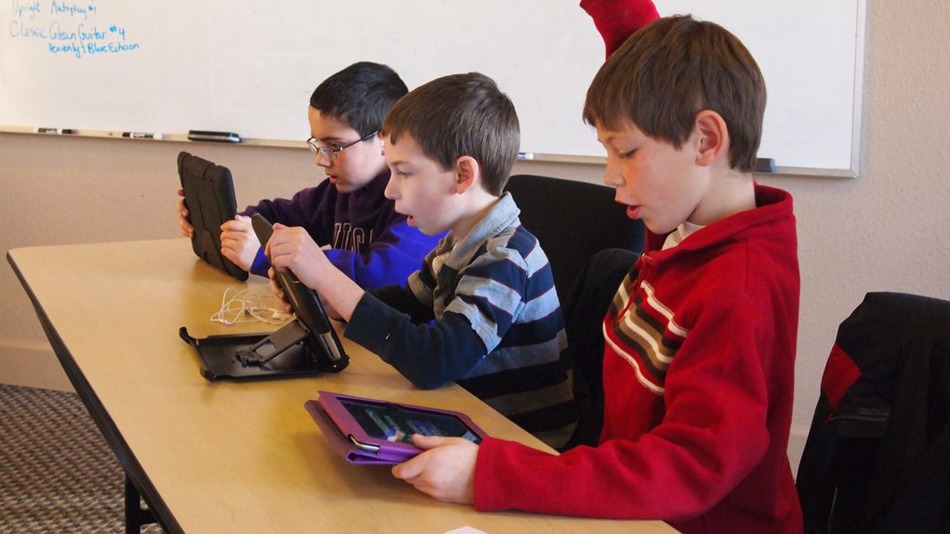5 Benefits of Gamification
Dmitri Mendeleev was a Russian scientist and educator in the 19th century who is often credited as the scientist that first published the Periodic Table of Elements. However, what people do not know is that he may have been one of the first scientists to use gamification to complete an educational task.

Dmitri Mendeleev
The term gamification can be used in two ways. The first way is by adopting the act of playing a video game into everyday use. The engagement levels and entertainment values of video gaming can motivate users to accomplish tasks that are normally viewed as boring, such as learning. Another definition of gamification is the act of using game elements to make non-games more enjoyable.1
Mendeleev was known to have been an avid card player, so it was logical for him to use cards as a way to categorize the elements in a way he could understand. Mendeleev turned the classification process into a card game by listing each element and other information on a card and placing them face up on a table. By doing this, he was able to have a better grasp on the relationship of each element. Mendeleev published his findings, which led scientists to discover new elements to fill in the gaps of Mendeleev's work as well as further developing the table.
Growing up, Mendeleev was not the most successful student, but he became a historical scientific figure because of gamification. This proves as an exemplary example of the benefits of gamification and the impact it can have on all students despite their prior academic achievement.
Here are a few of the benefits of gamification:
Gamification aids in cognitive development in adolescents.
Using gamification to aid in cognitive development will allow an increase in the activity of the regions of the brain to allow for adequate development. Games that are produced specifically for enhancing cognitive development are often referred to as "brain games." Brain games have become increasingly popular and are based on various questions and problems that the user has to answer or solve. Brain games can improve the rate in which the brain processes and maintains information.2
In some cases, it aids in physical development.
Exercising with an interactive game is just as effective as normal exercise. This form of exercise will be very beneficial in adolescents that enjoy playing video games but are not currently physically active. There are many long-term benefits to being active.
Gamification increases level of engagement in classrooms.
Scientists performed a study to measure the level of engagement students displayed when utilizing gamification in the classroom.3 The researchers assigned a point system to various daily class activities. Then the students were measured based on their level of engagement. The researchers found that the game-like atmosphere was favorable in the classroom and increased productivity.
Gamification aids in accessibility in the classroom.
Gamification can be used as a teaching tool to educate adolescents of all needs. Scientists studied the effectiveness of using gamification in the form of a video game to teach students diagnosed with autism.4 The results of this study showed that this training package was effective in teaching age-appropriate content through gamification.
Gamification isn't limited to the classroom.
Gamification is not limited to the classroom but can be used in learning outside the classroom. Perhaps you break up your child's math homework into sections. The child will then level up after completing each section to get hints that will solve a riddle. Or maybe you can have your child create their very own Periodic Table with a few elements just like Mendeleev did with cards. Gamification at home is also a good way to get involved in your child's education!

Students participating in gamification in the classroom.
As gamification becomes more of a buzzword, it is important to not write it off. There are many benefits to gamification that help in enhancing the learning process for students at all academic levels. Hopefully, one day the term gamification will no longer be a buzzword and will be a ubiquitous term used in classrooms. After all, gamification has been around for over a century--Mendeleev is proof.
References
- 1.) Deterding, S., Dixon, D., Khaled, R., & Nacke, L. (2011). From game design elements to gamefulness: defining "gamification". Proceedings of the MindTrek '11. doi:10.1145/2181037.2181040
- 2.) Doraiswamy, P. M., Agronin, M. (2009). Brain games: do they really work? http://www.scientificamerican.com/article.cfm?id=brain-games...
- 3.) Bustard, D. W., Black, M. M., Charles, T., Moore, A. A., McKinney, M. E. T., Moffett, P. (2011). GEL: A generic tool for game-enhanced learning. Unpublished research, University of Ulster, Coleraine, United Kingdom.
- 4.) Blum-Dimaya, A., Reeve, S. A., Reeve, K. F. (2010). Teaching children with autism to play a video game using activity schedules and game embedded simultaneous video modeling. Education and Treatment of Children, 33 (3). http://muse.jhu.edu/journals/education_and_treatment_of_chil...